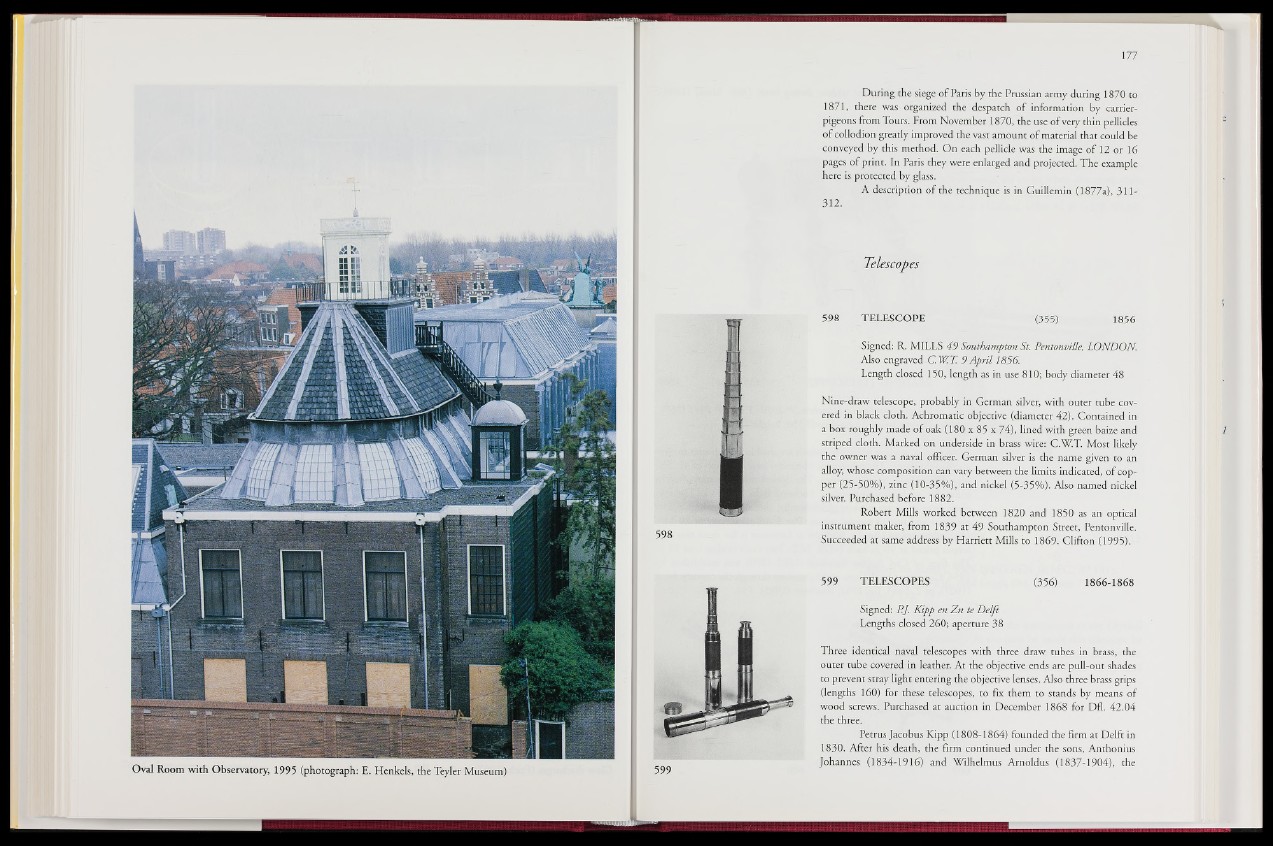
Oval Room with Observatory, 1995 (photograph: E. Henkels, theTeyler Museum)
During the siege of Paris by the Prussian army during 1870 to
1871, there was-organized the despatch of information by carrier-
pigeons from Tours. From November 1870, the use of very thin pellicles
of collodion greatly improved the vast amount of material that could be
conveyed by this method. On each pellicle was the image of 12 or 16
pages of print. In Paris they were enlarged and projected. The example
here is protected by glass.
A description of the technique is in Guillemin (1877a), 311-
312.
Telescopes
598 TELESCOPE '(355) 1856
Signed: R. MILLS 49 Southampton St. Pentonville, LONDON.
Also engraved C.W.T. 9 April 1856.
Length closed 150, length as in use 810; body diameter 48
598
Nine-draw telescope, probably in German silver, with outer tube covered
in black cloth. Achromatic objective (diameter 42). Contained in
a box roughly made of oak (180 x 85 x 74), lined with green baize and
striped cloth. Marked on underside in brass wire: C.W.T. Most likely
the owner was a naval officer. German silver is the name given to an
Kilby, whose composition can vary between the limits indicated, of copper
(25-50%), zinc (10-35%), and nickel (5-35%): Also named nickel
■stiver. Purchased before 1882.
Robert Mills worked between 1820 and 1850 as an optical
instrument maker, from 1839 at 49 Southampton Street, Pentonville.
Succeeded at same address by Harriett Mills to 1869. Clifton (1995)
599 TELESCOPES (356) 1866-1868
Signed: P.J. Kipp en Zn te Delft
Lengths closed 260; aperture 38
Three identical naval telescopes with three draw tubes in brass, the
outer tube covered in leather. At the objective ends are pull-out shades
to prevent stray light entering the objective lenses. Also three brass grips
(lengths 160) for these telescopes, to fix them to stands by means of
wood screws. Purchased at auction in December 1868 for Dfl. 42.04
the three.
Petrus Jacobus Kipp (1808-1864) founded the firm at Delft in
1830. After his death, the firm continued under the sons, Anthonius
Johannes (1834-1916) and Wilhelmus Arnoldus (1837-1904), the